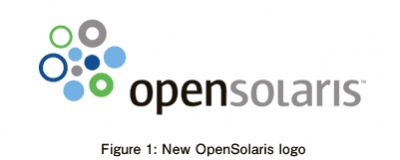What is OpenSolaris?
Special feature in May issue - OS-1 Grand Prix (published on Wednesdays) is OpenSolaris. The author is Mr. Takanobu Masuzuki who has devoted lots of time to developing and popularizing Solaris since its inception. He has been and is working to appeal to as many people as possible to promote the beauty of OpenSolaris. Now, here is Mr. Masuzuki.
On May 5, 2008, at CommunityOne event (http://developers.sun.com/events/communityone/) in San Francisco, Sun Microsystems (Sun) released Solaris 2008.05. For those who have never experienced OpenSolaris, let me outline some of its features.
Before getting into the main issue here, I would like to explain what OpenSolaris is. OpenSolaris is an operating system (OS) created by Sun. It includes a variety of revolutionary features that are based on UNIX, attracting software engineers around the world.
More importantly, Sun has made this OS an open source software (OSS).
The OpenSolaris project (http://www.opensolaris.org)was launched on June 14, 2005. The OpenSolaris community is now growing worldwide, with more than 103,000 community members, 67 user groups and more than 220 sub-projects.
What is distinctive about OpenSolaris?
There are many operating systems out there, such as Linux, Windows, etc. So, you may want to know what is distinctive about OpenSolaris. We outlined the major features of OpenSolaris in an issue titled "Building a full-scale enterprise system with OpenSolaris" (http://www.thinkit.co.jp/cert/article/0706/1/1/2.htm). This issue introduces some of its major features.
First, OpenSolaris runs on a multi-platform (SPARC processor and x86/x64 processor) and supports multiple CPUs, multiple cores and multiple threads. This allows you to configure a scalable system in a wide range of user environments, from a laptop PC to a high-end server using 64 SPARC64 VI processors (128 cores, 256 threads).
Second, the development environment contains industry-standard APIs (Application Programming Interfaces), which makes the development of highly portable applications possible.
Third, a variety of security mechanisms is taken into account in the default configuration. OpenSolaris also offers advanced security features (for example, security-label-based Mandatory Access Control) that support security specifications required to build a system that deals with highly confidential information, including mission-critical tasks or business services.
Fourth, OpenSolaris uses DTrace to trace information on a production system to analyze causes of degradation in performance and failures. It is difficult to stop services on a production system, it usually creates a separate test environment to isolate and analyze problems should they occur. This, however, requires a lot of time and effort. DTrace will help you drastically improve your work efficiency.
Fifth, OpenSolaris also provides Solaris Container, an innovative virtual technology. Using Solaris Container allows you to build multiple environments on which to run OpenSolaris on a single machine and to run them simultaneously. This makes it possible to improve usage of system resources by integrating different services running on multiple servers, or to integrate a variety of application test environments to implement a virtual OS environment by sharing a single machine.
Sixth, OpenSolaris provides a new file system called Solaris ZFS (ZFS). The ZFS is a file system that supports files as large as 128 bits. It allows you to add new hard disk drives or expand existing ones in a similar way that memory boards are added to a PC. In addition, the ZFS supports RAID-Z and has checksum of data blocks and thus is highly resistant to hard disk drive failures.
The ZFS makes it possible to quickly restore a file through data backup or rollback using a feature called "snapshot".
Lastly, OpenSolaris provides very high degree of binary application compatibility, thereby reducing the risk associated with operating system updates.
Now, you have an idea of what OpenSolaris has to offer. We will now explain what the new binary distribution of OpenSolaris, or OpenSolaris 2008.05, is.
- この記事のキーワード




















